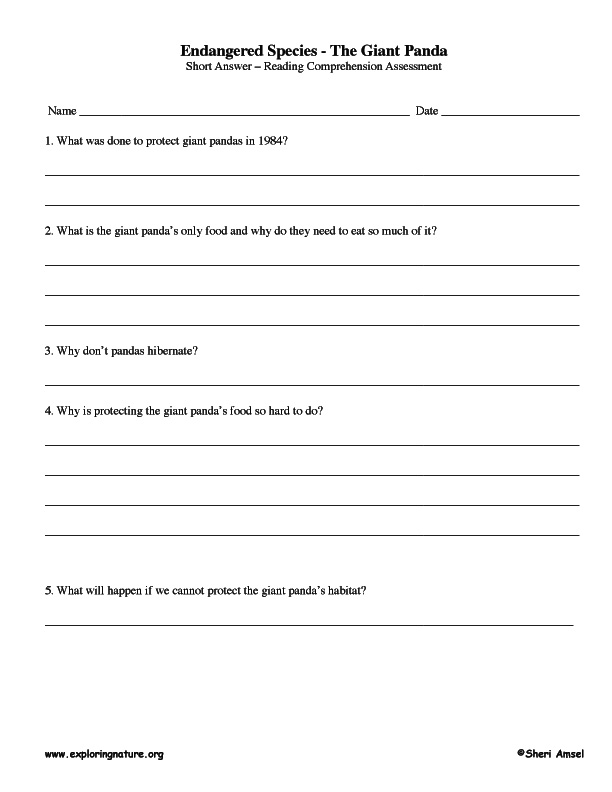

The giant panda is a well known (and well loved) species that is being driven to extinction by habitat loss. It has become one of the most endangered mammals in the world, with only 1,600 of them left. Although they have been protected from hunting and on the Endangered Species list since 1984, pandas are still disappearing.
Their problem is complex. The giant panda eats bamboo and only bamboo. There is so little nutrition in bamboo that they have to eat for more than 14 hours a day to get the calories they need. They eat 30 to 80 pounds of bamboo parts a day. They don’t even have time to stop and hibernate. Without a bamboo forest on which to feed, all the pandas will die.
Giant pandas are found only in southwestern China, along the eastern edge of the Tibetan plateau in the mountains between 4,000 and 12,000 feet near dense stands of bamboo. Although they were once more widespread, today they are limited to six small areas. China has one of the most populated countries in the world. There are more people here every year. To house and feed themselves, they cut down forests for farms and communities, including the shrinking bamboo forests. Sometimes, pandas are left in small islands of bamboo surrounded by houses and highways. Worse yet, sometimes bamboo will die off and the pandas will have to go in search of a new bamboo forest -- if there is one.
Unless all development of the bamboo forests stop soon, there will be no more panda habitat and then no more pandas.
________________________________________________________________________________________________
Testing and Assessment
Assess content comprehension about Topics about Endangered Species with the Mutiple Choice Test.
And the specifically about The Giant Panda with this Short Answer Quiz.
Assess student knowledge of which animals are endangered with the Endangered Animal Labeling Page.
Use the Endangered Animal Coloring Page as a model to reinforce this knowledge.
To leanr more about the Giant Panda.
________________________________________________________________________________________________
When you research information you must cite the reference. Citing for websites is different from citing from books, magazines and periodicals. The style of citing shown here is from the MLA Style Citations (Modern Language Association).
When citing a WEBSITE the general format is as follows.
Author Last Name, First Name(s). "Title: Subtitle of Part of Web Page, if appropriate." Title: Subtitle: Section of Page if appropriate. Sponsoring/Publishing Agency, If Given. Additional significant descriptive information. Date of Electronic Publication or other Date, such as Last Updated. Day Month Year of access < URL >.
Amsel, Sheri. "Endangered Species - The Giant Panda" Exploring Nature Educational Resource ©2005-2024. December 13, 2024
< http://mail.exploringnature.org/db/view/1791 >

